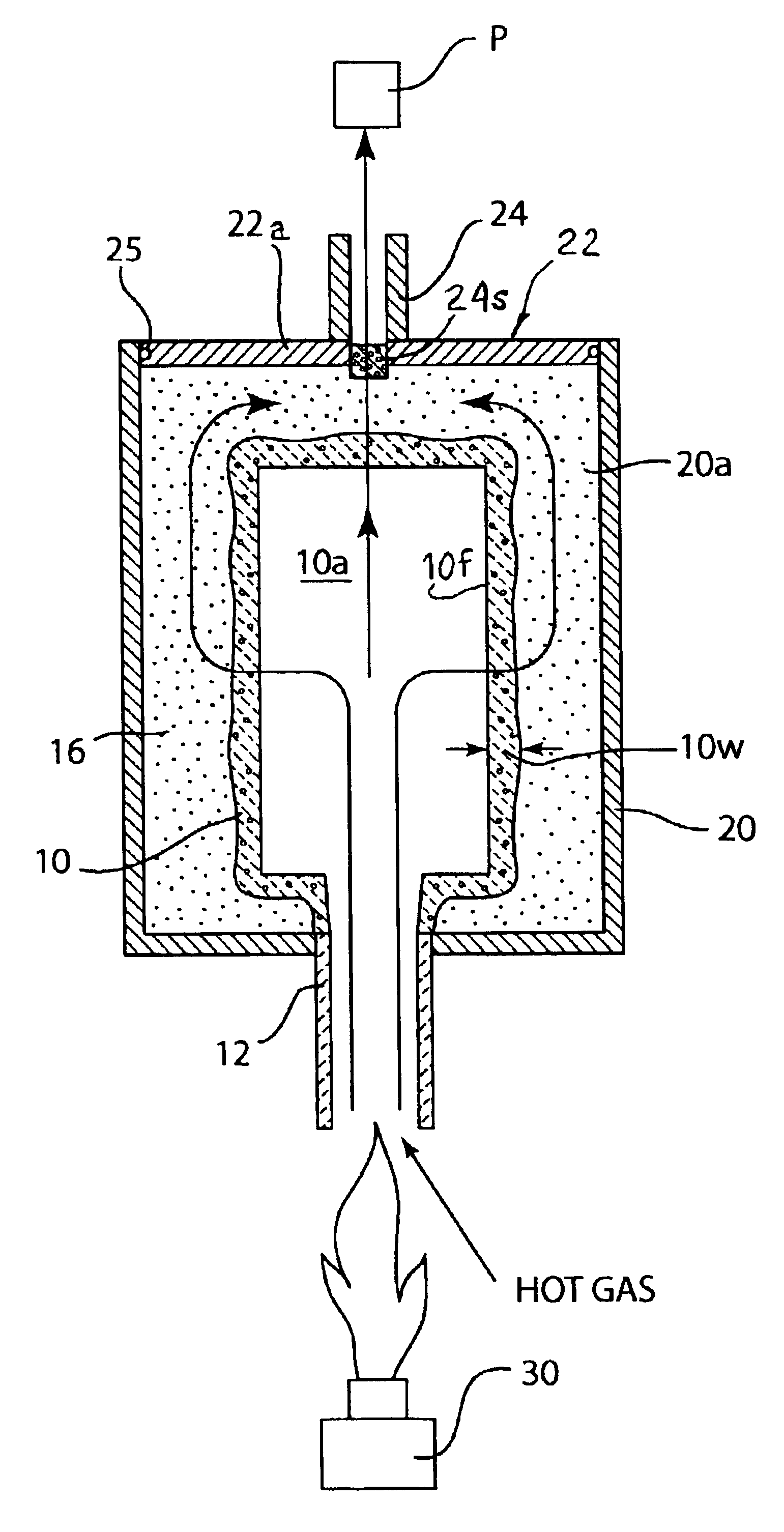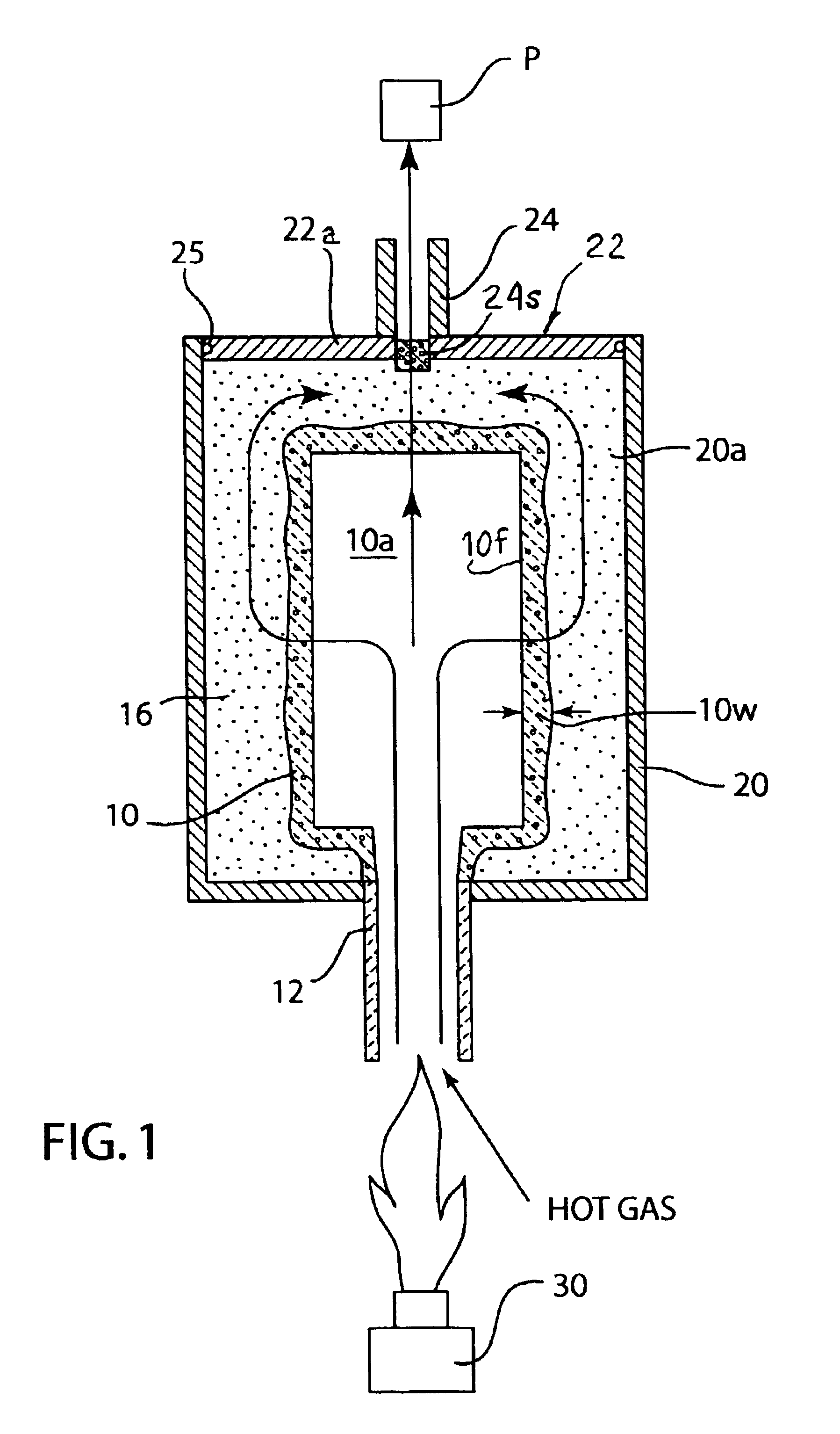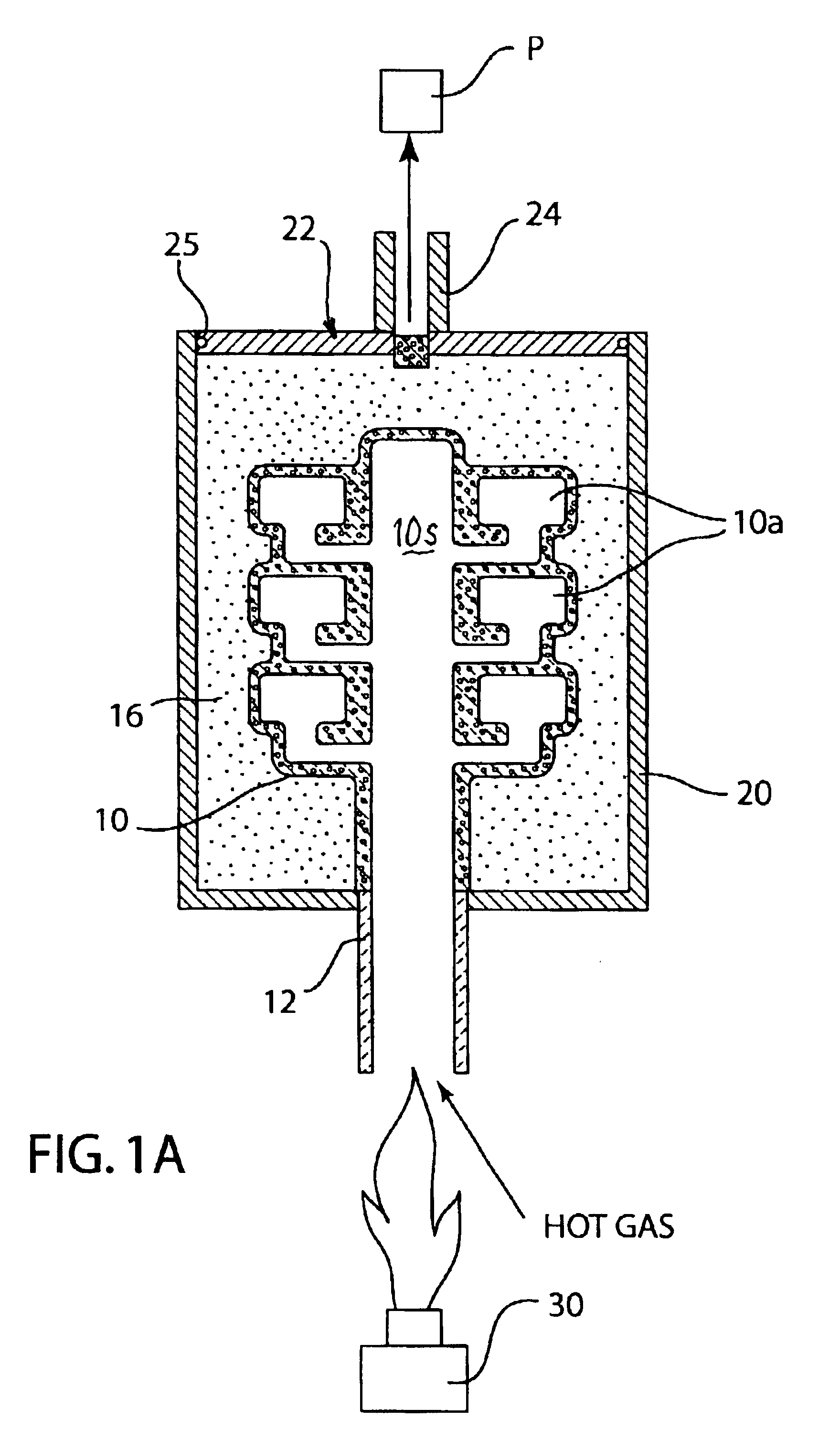Method of heating casting mold
a casting mold and heating technology, applied in the field of heating casting molds, can solve the problems of requiring a substantial amount of refractory materials, slow process, long time for binders,
- Summary
- Abstract
- Description
- Claims
- Application Information
AI Technical Summary
Benefits of technology
Problems solved by technology
Method used
Image
Examples
examples
[0034]The following Examples are offered to further illustrate and not limit the invention. The first Example 1 involves using an embodiment of the mold heating process of the invention to raise the temperature of the mold wall 10w of shell mold 10 formed pursuant to the above processing from ambient up to a desired casting temperature.
[0035]Patterns for an automotive rocker arm were molded in expanded polystyrene at a density of 5 Lb / ft3. These patterns were assembled onto a 3″ diameter×12″ long cylindrical tube of expanded polystyrene using a hot melt adhesive. The bottom of the cylindrical expanded polystyrene tube was attached with hot melt glue to a refractory tubular conduit 12. This conduit was formed from clay bonded fused silica refractory.
[0036]The pattern assembly was coated with a refractory coating composed of fused silica bonded with colloidal silica. A thin 0.1 mm coating of fused silica of average particle size 40 microns was applied first and dried. This was followe...
PUM
| Property | Measurement | Unit |
|---|---|---|
| Temperature | aaaaa | aaaaa |
| Pressure | aaaaa | aaaaa |
| Pressure drop | aaaaa | aaaaa |
Abstract
Description
Claims
Application Information
 Login to View More
Login to View More - Generate Ideas
- Intellectual Property
- Life Sciences
- Materials
- Tech Scout
- Unparalleled Data Quality
- Higher Quality Content
- 60% Fewer Hallucinations
Browse by: Latest US Patents, China's latest patents, Technical Efficacy Thesaurus, Application Domain, Technology Topic, Popular Technical Reports.
© 2025 PatSnap. All rights reserved.Legal|Privacy policy|Modern Slavery Act Transparency Statement|Sitemap|About US| Contact US: help@patsnap.com



